Red Fort
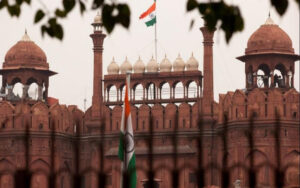 |
| Red Fort |
Timings: –
Sunrise to Sunset [7:00 am to 5:30 pm]
Open Tue-Sun; Mondays closed
Entry Fee: –
INR 90 (Indians), INR 950 (foreigners)
Photography: Nil (INR 25 for video filming)
Location: –
Netaji Subhash Marg, Lal Quila, Chandni Chowk, New Delhi, Delhi 110006 ←Click here
Lal Quila, Delhi Overview
The Red Fort may be a historical fortification within the Old Delhi area. It was the most residence of the emperors of the Mughal dynasty. Shah Jahan constructed it within the year 1639 as a results of a capital shift from Agra to Delhi. The Red Fort may be a historical fortification within the Old Delhi area. It was the most residence of the emperors of the Mughal dynasty. This impressive bit of engineering gets its name from its invulnerable red sandstone dividers. Notwithstanding pleasing the rulers and their families, it had been the formal and political focus of the Mughal state and in this way the setting for occasions fundamentally affecting the locale. Today, this monument is home to several museums that have an assortment of precious artifacts on display. Every year, the Indian Prime Minister unfurls the ensign here on the Independence Day.
Formerly referred to as Quila-e-Mubarak or the Blessed Fort, the Red Fort lies along the banks of the river Yamuna, whose waters fed the moats surrounding the fort. It was a neighborhood of the medieval city of Shahjahanabad, popularly known today as ‘Old Delhi‘. The entire fort complex is claimed to represent the architectural creativity and brilliance of Mughal architecture. With such a lot history and heritage related to it, the Red Fortis one among the foremost popular monuments in India and a serious tourist attraction in Delhi. It turned into an UNESCO world heritage site in 2007. The Archaeological Survey of India is at the present liable for the safety and preservation of this magnificent monument.
History
The Quila-e-Mubarak or the blessed fort was home to Shah Jahan the Mughal Emperor and the grandson of Akbar, the greatest ruler the Mughal Empire ever saw. Not so one of a kind from Akbar, and having taken sufficient cues from him, Shah Jahan chartered his own path with élan. He was responsible for erecting some of the glorious structures of the time which are still identified as the most exquisite known for their sheer magnificence and the arduous journeys behind them. The Red Fort came to the being after Shah Jahan moved his capital from Agra and left his residence at the Agra Fort. He constructed a replacement walled city – Shahjahanabad naming it after himself and built a replacement residence, the Red Fort. It took 10 years to finish the Red Fort which filled in as a habitation to the Mughal rulers for about 200 years. The chief architect of the Red Fort was Ustad Ahmed Lahauri who started the development in 1638 and completed in 1648.
The red within the Red Fort was always not present. What many don’t know is that the edifice was painted red by the British only after the limestone from which the building was originally built in started to chip off. The name Red Fort finds its roots in the British era after they painted it in red to preserve it and thus rechristened it to Red Fort which then had its translation to Lal Quila among the land of the people.
With the passing away of Shah Jahan the fate of the fort started to plummet as well. The successive rulers turned out to be defenceless against the rampages and pillages that followed. The Turk ruler Nadir Shah assaulted the fort in 1739.The last Mughal ruler to have lived in the Red Fort was Bahadur Shah Zafar whose rule wasn’t so significant and the title was mere titular. Later when the British seized power and control, he was exiled to then Burma known as Myanmar now. And that was the end of the Mughal dynasty.
Architecture
The format of the Red Fort holds the hints of the Salimgarh Fort assembled nearby in 1546. The diagram and style of the post represents Mughal imagination, which was well known during the Emperor Shah Jahan‘s period.
The Red Fort highlights the high-level artwork and decorative work. The artwork may be a mixture of Persian, European, and Indian styles, which led to growth of unique, rich Shahjahani pattern. Red Fort is one of the national monuments of India, which beholds an elongated time of Indian history, architectural intellect, and fine sculpting. Even before the popularity of Indian monument of national heritage, plans were created to preserve the fort.
The dividers of the fort are equally designed by overwhelming string-courses. There are two major gates related to these walls namely, the Delhi and therefore the Lahori Gates. The Lahori Gate represents the most entrance and may be a thanks to an extended bazaar street named the Chatta Chowk. The Chatta Chowk takes you to a large open space that passes the large north-South Street. This street previously divided the fort’s military functions at its west and the palaces at the east. The southernmost tip of this street is the Delhi Gate.
Interesting Facts on Red Fort
o British destroyed the green belt inside the fortress to create barracks for the colonial army.
Light and Sound Show
Red Fort is visited by many tourists for the numerous historical relevance that it holds. But apart from the red sandstone and therefore the mighty building of the medieval times, there’s another attraction that brings the tourists to the Blessed Fort – Light and Sound Show.
The show, held every evening except Mondays, may be a one hour fest of lights and sounds which takes place inside the premises of the Fort. There’s no better way to learn about the history of the Fort.
➧The shows are both in English and Hindi at various timings: –
- Hindi: – 7:30 pm to 8:30 pm
- English: – 9:00 pm to 10:00 pm
➧Tickets: –
- INR 20 for kids and INR 60 for adults
- Weekends and Government Holidays: – INR 80 for adults and INR 30 for kids
Photos of Lal Quila
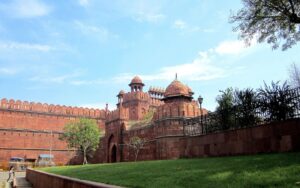
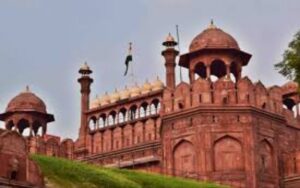
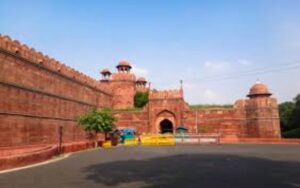
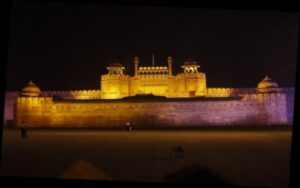
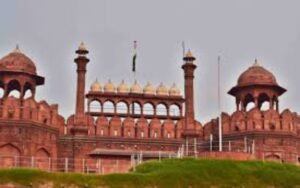
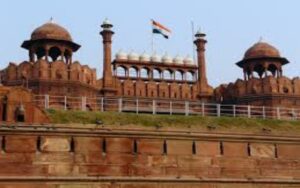
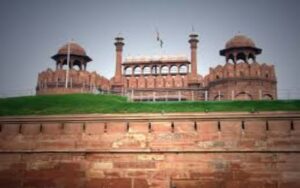
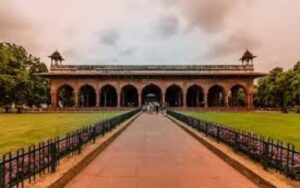
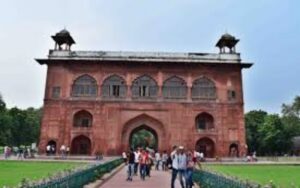
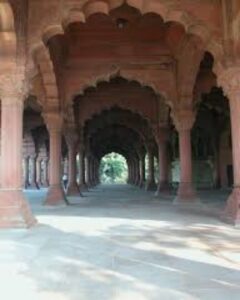
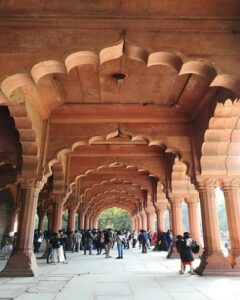

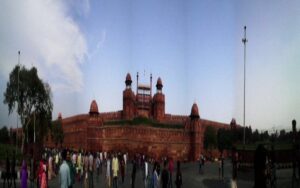
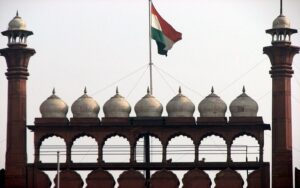
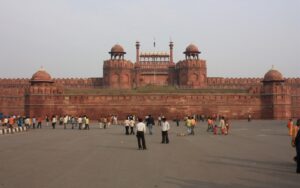
➤ Frequently Asked Question About Red Fort (Lal Quila):
Q. How to reach Red Fort?
Ans: – Delhi holds a world airport that connects several international destinations with Delhi. Delhi is associated with all states of the country via railways and streets. Once you reach Delhi, you’ll be able to find many modes of transportation to succeed in Red Fort. The fort is one in all the important tourist destinations within the city.
|
Nearest Railway Station: – |
Old Delhi Railway Station |
|
Nearest Metro Station : – |
Chandni Chowk Metro Station |
|
Nearest Bus Stand : – |
Kashmiri Gate Bus Station |
|
Nearest Airport : – |
Indira Gandhi International Airport |
The fort is located very close to Chandni Chowk metro state. If you get out of the Gate 5 from the metro station, you’ll hire rickshaw to achieve the fort. You can also walk from the station to the destination. You can find taxis and autos from any a part of the town to succeed in Red Fort.
Q. What is the best time to visit Red Fort?
Ans: – The fort is at prime excellence consistently. If you visit during national holidays like Independence Day and Republic Day, you’ll find many interesting activities and even the Prime Minister’s speech. On the disadvantage, the fort are going to be heavily crowded during these holidays and also the security are going to be very high.
Season has no effect on the beauty of the fort. However, visiting India during summer are often dehydrating and humid experience. Delhi experiences very popular climate from March to June.
Monsoon starts in July and ends in September. The prime tourism season is that the winter season, which starts in October and ends in February. [Recommended season to visit this place is November to March]
|
Monsoon : – |
August To September |
|
Summer : – |
Starts in early April and peak in May & Temperature is 32°C (average) |
|
Winter : – |
Starts in November and peaks in January & Average Temperature is 12 to 13°C |
Q. What makes the Red Fort famous?
Ans: – After the Mughal capital moved from Agra to Shahjahanabad, Red Fort was constructed because the new seat of the Mughal Empire . Made of red sandstone, the fort – a walled citadel took almost a decade to finish. It is believed that it was better planned and built compared to the previous seat of the Mughal Empire – the Agra Fort. The last Mughal Emperor to have lived at the fort was Bahadur Shah Zafar after which the British took over the country. Post-Independence once a year on August 15, the Prime Minister addresses the state from the fort.
Q. Which is the fundamental entry gate to the Red Fort?
Ans: – Red Fort has two gates: the Lahori Gate and the Delhi Gate. Lahori Gate is that the main gate to enter the fort. It is arranged toward the west wall of the fort while the Delhi Gate misleads the southern wall. When did the Red Fort become a World Heritage Site? The red sandstone rampart was declared a UNESCO world heritage site in 2007.What is the architectural style of Red Fort in Delhi? The architecture of the Red Fort is an archetypal specimen of the Mughal style which is a blend of Timurid and Persian along with smatterings of Hindu traditions.
Hope you liked this article on Red Fort ( Lal Quila). Do share your views with me within the comments section below. If this article was helpful, do share this post with your friends on Facebook and Twitter. It would mean a lot.
Hey there! I’m Santu Chakraborty and I’m not your typical traveler. By day, I wrangle circuits and solve electrical mysteries as an engineer, but my true passion lies in exploring the world and sharing those experiences with you. For the past five years, this blog has been my canvas, where I paint stories of adventure, practical travel tips, and cultural insights to ignite your wanderlust. So, come join me on my journeys and discover the magic that awaits just beyond the horizon!


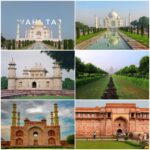
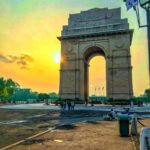
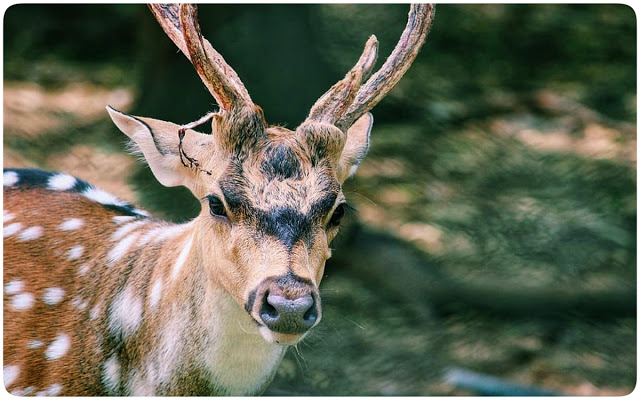
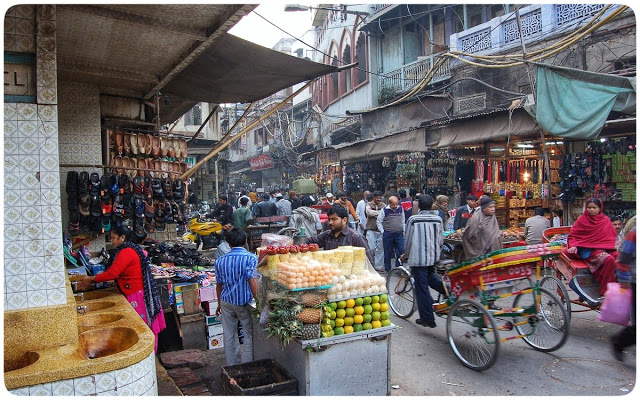
Valuable information 👍